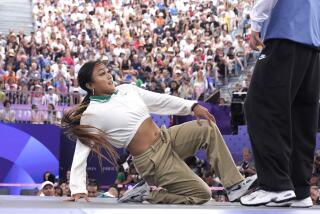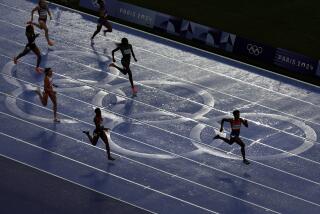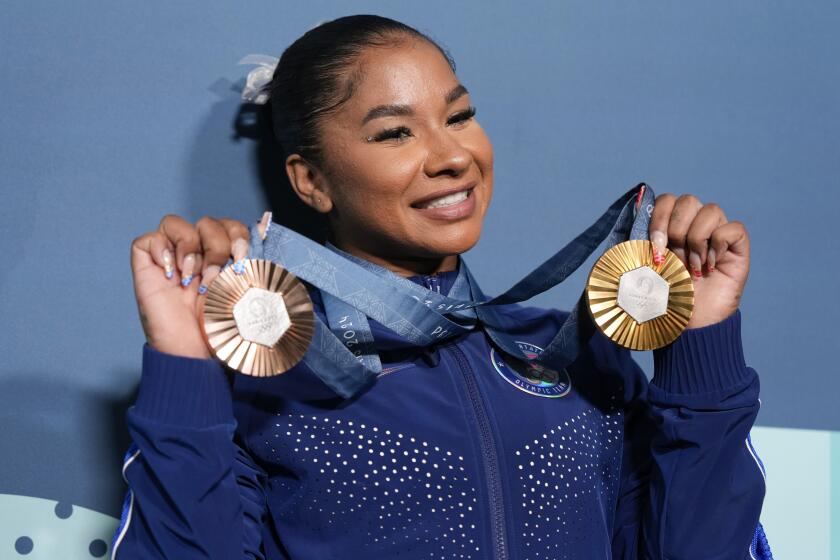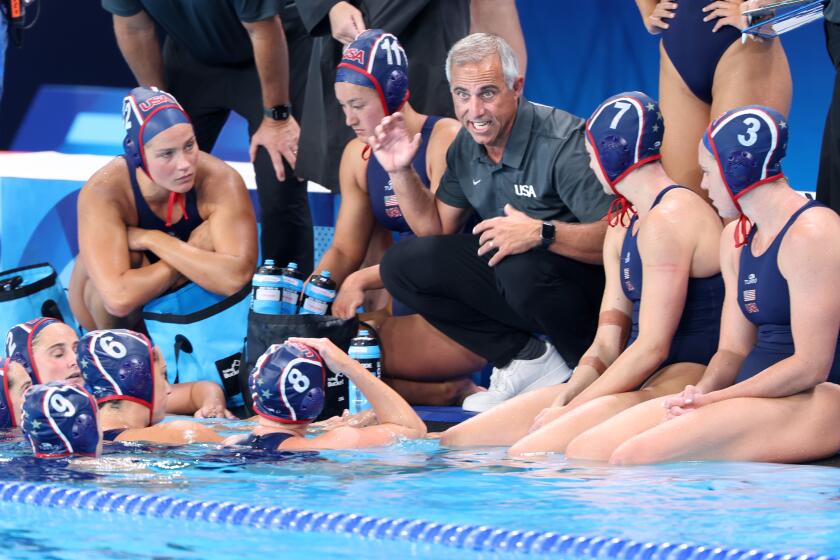A quirky Olympic sport adds to its popularity with another discipline — mixed doubles curling
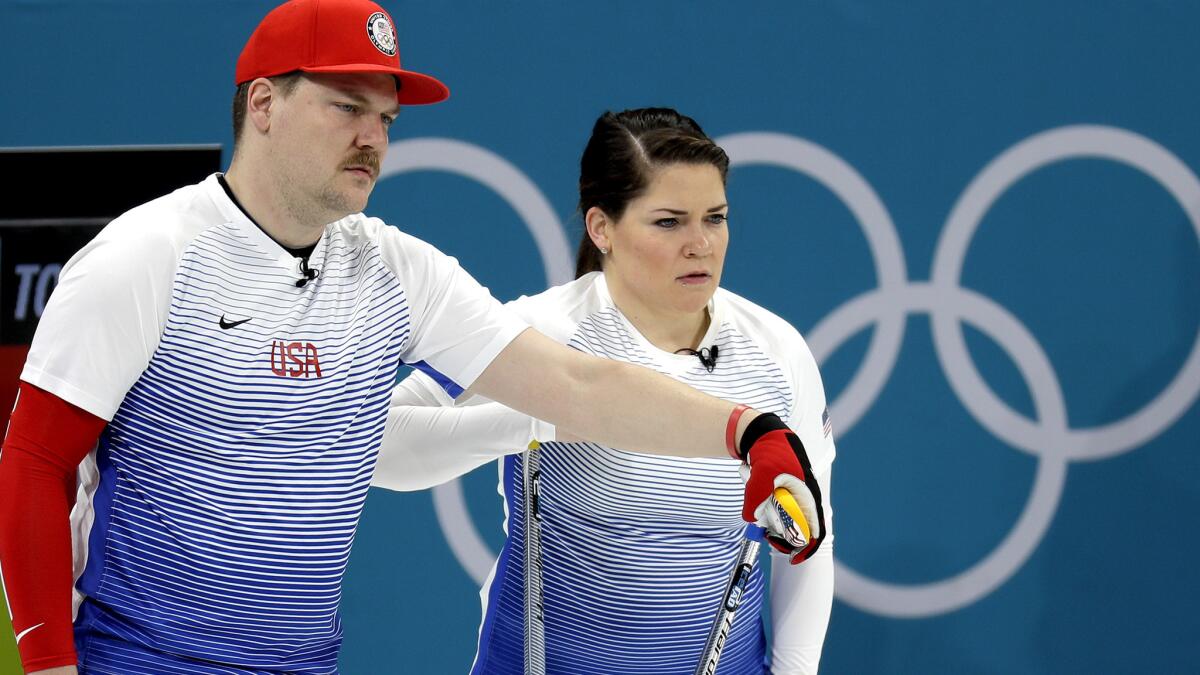
There are certain things a man cannot say to his wife.
But with little sisters, it seems, anything goes.
Which might explain why Matt and Becca Hamilton made it to the 2018 Winter Games in the fledgling sport of mixed doubles curling. The Americans have no problem yelling at each other.
“My sister is a little better at taking things with a grain of salt,” Matt said.
Becca added: “He’s just brutally honest. But, like he always says, we can’t divorce each other.”
Mixed doubles, making its Olympic debut in Pyeongchang, differs from traditional curling in several important ways, beginning with the athletes on the ice.
One man. One woman.
With teams of two, instead of four, communication becomes trickier. The curler who delivers the rock must pop up and follow the shot down the ice, barking at his or her partner about when and how hard to sweep.
On a recent evening at the Gangneung Curling Center, with teams from various nations playing in four games at once, there was plenty of noise.
The Korean woman shrieked at her teammate as he hovered over the rock. He hollered back and began sweeping like mad.
On an adjacent sheet, the Norwegian woman urged: “Hard, hard, hard!”
It was like eavesdropping on a marital spat in multiple languages.
Or, as John Morris of the Canadian team put it, “You are not always the best of friends, but you have a common goal.”
Curling ranks among the quirkiest of Olympic events and is something of a cult favorite, perhaps because it is the only winter competition that one could theoretically do while drinking a beer and smoking a cigarette.
Think shuffleboard on ice. Players aim for a bull’s-eye target and, when all the throws are done, the team with the granite rocks closest to the center will score the most points.
The sweeping part makes things stranger — at least to outsiders — as players scurry beside the stone with brushes in hand, sweeping the pebbled ice to get the rock to speed up, slow down or curve.

This bizarre activity comes with a suitable terminology as players discuss hogged rocks, kizzle kazzle and something called a Manitoba tuck.
“I remember that with the last couple of Olympics, the kind of buzz,” British curler Kyle Smith said. “People got really interested in the tactical side of the game.”
Interested enough to drive ratings with extensive coverage across NBC’s cable channels.
Looking to capitalize on this quadrennial popularity, the International Olympic Committee added mixed doubles to the program in Pyeongchang.
Some of the rule differences are a bit complicated, as each team begins with two stones in play and, once each game, can invoke a “power play” to adjust the stones’ position.
More importantly for new fans, the play is quicker, with fewer rocks thrown and fewer ends, which are the curling equivalent of innings. Games last about 90 minutes, or about half the time of a conventional team match.
“For today’s fast-paced world,” Morris said, “it’s the way to go.”
But the compressed time frame can be problematic.
The margin of error is smaller, less room to miss a shot or two. In a highly strategic sport, in which players think two or three throws ahead, racing the clock can lead to mistakes.
Though athleticism might be a relative term in curling, mixed doubles is certainly more strenuous, if only because there are fewer people to share the work of throwing and sweeping.
Not everyone in the curling world likes this difference. As Matt Hamilton said: “The traditionalists think it’s a little weird.”
Things did not go well for him and his sister over the last week. They committed too many small errors and finished round-robin play at 2-5, not nearly good enough to advance to Monday’s semifinals.

Switzerland and the neutral Olympic Athlete From Russia duo fared better. The Canadians finished on top with a 6-1 record, in part because of their ability to communicate during games.
“Trying to keep things positive,” Canada’s Kaitlyn Lawes said. “It’s just trying to make sure you’re saying the right thing at the right time.”
Which circles back to the biggest distinction with mixed doubles.
Teammates might not always agree on strategy or when to sweep. The discussion might grow heated if someone makes the wrong decision or doesn’t follow the plan.
“You’ve got a guy and a girl playing together, so it’s interesting to see the dynamic,” Matt Hamilton said. “Is she going to yell at him or is he going to yell at her? Who’s the boss?”
During a close game against Finland, Becca delivered a stone that sailed past the target. With all the curlers miked for television, it was easy to hear the tense words that followed.
“Hey, Becca, come over here.”
“What?” she said.
“Don’t roll your eyes at me … like that.”
The Wisconsin natives acknowledge they didn’t get along so well as teenagers.
One time, when he stole the television remote, she yelled “Dad, Matt’s hitting me,” and he got in trouble. On a family vacation, when she fell asleep in the van, he poured hot sauce into her open mouth.
Curling eventually brought them closer. Or, at least, provided them with a setting where all that bickering didn’t matter as much.
Not that Matt would try mixed doubles with everyone.
“Oooh,” he said. “I could not curl with my wife.”
Follow @LAtimesWharton on Twitter
More to Read
Go beyond the scoreboard
Get the latest on L.A.'s teams in the daily Sports Report newsletter.
You may occasionally receive promotional content from the Los Angeles Times.

